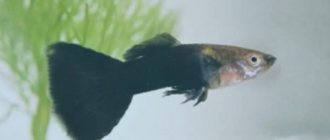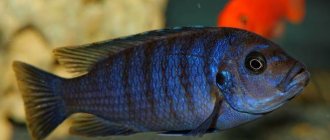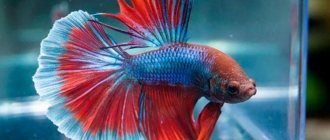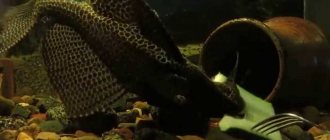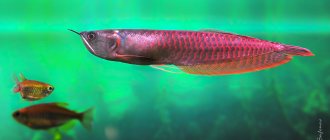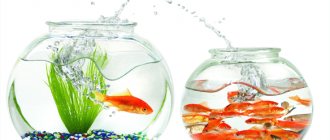Complete aquarium equipment for keeping fish is expensive. Aeration, filtration, lighting, and ventilation systems require material costs. On the other hand, both aquarium pets and the equipment itself need constant attention, care, and control. This situation confuses some novice aquarists. But it's not all that complicated. In nature, there are fish that can live in a home aquarium without oxygen, which allows you to save on the purchase of additional equipment.
A little history
Residents of medieval Europe knew these fish only from drawings on vases, fans and boxes brought by merchants from the East along the Great Silk Road. It was believed that images of bright, big-eyed and bushy-tailed creatures were the same figment of the artist’s imagination, like images of dragons. The first European to tell his fellow citizens about the bizarre fish at the end of the 13th century was the famous Venetian traveler Marco Polo.
Many centuries passed before ponds with goldfish ceased to be a kind of “state secret”, “secret objects” hidden from the eyes of foreigners behind the high walls of Chinese and Japanese palaces. Alfred Brehm wrote that the first goldfish were brought to Europe in 1611. According to other sources, this happened later. Goldfish came to Russia as a strange gift to the father of Peter I, Tsar Alexei Mikhailovich Romanov, a great lover of animals and plants. Due to improper maintenance, the fish soon died. It was believed, for example, that they feed on water...
In those days, goldfish were surrounded by an aura of legends attributing a heavenly, supernatural origin to these creatures. However, the true story of the origin of the goldfish is no less interesting. Having carefully studied ancient literature, examined the structure of fish and conducted experiments, ichthyologists found that the ancestor of the aquarium beauty is the Chinese subspecies of silver crucian carp, common in small, well-warmed reservoirs of China, Korea and Japan. Amateur fishermen in our country are well aware of another subspecies of silver crucian carp, which lives in the territory from the Amur River basin to the western border of Russia. These fish should not be confused with goldfish (also known as common or broad-bodied carp), which is not related to goldfish by any family ties.
From time to time, yellow and orange-red mutants appear in the offspring of silver-gray Chinese crucian carp. Such an individual is an ordinary goldfish (with an elongated body and normal fin structure). It differs from crucian carp only in the congenital deficiency of dark pigment in the integument of the body. People placed goldfish caught in the rivers of the southern provinces of China in pools and tried in every possible way to reproduce them. Mentions of such amazing pets are found in Chinese manuscripts from 618-960 AD. In the early Middle Ages, people learned to get offspring from unusually colored crucian carp. Apparently, it was Korean fish breeders who first took advantage of the variability of crucian carp in color and body shape and began to make the first attempts to select goldfish. The goldfish reached its true development - in many breeds and varieties - in China, which is considered its homeland.
How to care for a goldfish in a round aquarium?
Small round aquariums look beautiful in any interior and are easy to clean and move. In such containers, beginning aquarists often keep small, unpretentious fish: guppies, cockerels, mollies, and platies. But the most popular option is a round vessel in which a goldfish swims.
Breeds and color variations
By selecting among fish individuals with all sorts of deformities in the structure of the body, eyes and fins, Korean, Chinese and Japanese breeders succeeded in turning these deviations into permanent characteristics of the breeds. Breeding each breed of goldfish required many years of patient work of several generations. The result of targeted artificial selection was a change in the color and body shape of fish and the appearance of downright fantastic creatures, looking at which it is difficult to believe that they originated from ordinary crucian carp.
Today there are more than one hundred and twenty color variations and breeds of goldfish. Chinese fish farms have breeds that are still unknown in Europe. The most popular among Russian hobbyists are short-bodied goldfish: veiltail, telescope, oranda, lionhead; less common are the long-bodied comet, shubunkin and common goldfish.
The goldfish is very similar in shape to the crucian carp in the shape of its fins and body, but is colored differently. The most common are golden and reddish-orange variations, often two-tone (gold with black or silver-white spots) and calico (red-white-black). The comet has a more graceful body than that of an ordinary goldfish and an elongated (in the best specimens - in the form of two ribbons) caudal fin. Shubunkin is distinguished by its variegated, very varied colors and transparent scales, which makes it appear scaleless. It is usually calico. Fish with dark red, black, brown and yellow spots scattered across a bluish background are the rarest. The fins of the Shubunkin are longer than those of the goldfish. All these breeds have single caudal and anal fins, while the fantail, which looks like a regular goldfish, has double fins. The fantail is believed to be the ancestor of the short-bodied goldfish breeds.
Veiltail and telescope are fish with a short ovoid body and highly elongated fins. Their tail fin is forked and hangs down like a veil. Its length often exceeds the length of the body. The eyes of telescopes are enlarged and look like balls or cylinders. The shorter the body of the veiltail and telescope and the larger their fins, the more valuable the fish is for the aquarist. Oranda is a type of veiltail, distinguished by skin growths on the head and gill covers. In addition to highly developed growths, the lionhead is also characterized by short fins and a complete absence of a dorsal fin.
A short body with a swollen belly and a gently falling double long tail do not allow veiltails and orandas to swim quickly and control their movements well. The body shape obtained through artificial selection led to constriction and distortion of the internal organs of the fish. Veiltails and similar breeds are more susceptible to various diseases, and their lifespan is much shorter than representatives of long-bodied breeds.
In aquariums, there are crosses and transitional forms between all the described breeds, for example, the veiltail with a single caudal fin or the fantail with the Shubunkin coloring. All of them can serve as decoration for an aquarium, but such fish cannot be used in breeding a particular breed. Incorrect selection of breeders for breeding leads to the fact that the “classic” veiltails, comets and shubunkins become a real rarity.
Feed volume
Goldfish are cold-blooded, so they do not need as much food as warm-blooded tropical fish. Goldfish can go about a week without eating. They will be hungry, but not hungry. They will not dry out or die, but will stop growing during this time. When they are fed again, they will grow again. Underfeeding goldfish is not a cause for concern; overfeeding causes much more problems - because of it, the fish suffer from constipation and other problems.
As a rule, in one feeding you need so much food that it is eaten within 2-3 minutes. Goldfish are omnivorous scavengers and will continue to eat as long as they find food in the tank. Eventually this can even lead to intestinal rupture and death. Overfeeding will not make them grow faster, but rather will kill them. If you want your goldfish to grow faster and become bigger, provide them with an aquarium with more space.
Grateful pupils
A large aquarium with goldfish of different breeds looks very elegant and serves as a real decoration for the room. You never get tired of watching these original creatures. Some aquarists “do not respect” goldfish for their gluttony and large size, for their unnaturally pretentious appearance and for the typical crucian carp habit of digging in the sand of the aquarium, which leads to cloudy water and damage to plants. At the same time, goldfish are grateful pupils who respond well to the people caring for them. They become tame, take food from the owner’s fingers, allow themselves to be stroked and even swim into the palm of their hand. All this makes goldfish ideal pets for children for whom simply observing and caring for animals is not enough.
What aquarium fish can do without a filter and oxygen?
You should find out which fish can live without oxygen and a filter if you decide to install an aquarium, and which ones need these attributes. Aquarium fish are the same living organisms as people, plants, and animals, which means that in any case they cannot do without air. The only difference is that different types of fish use different organs for breathing and their needs are also different.
What pets don't need a compressor?
Aquarium fish are capable of releasing oxygen molecules from water. This separation process is carried out through the gills. Water, passing through 4 or 5 paired lobes of the gills, releases O2 and at the same time takes away the accumulated carbon dioxide. From the gills, oxygen molecules are carried throughout the body.
There are varieties of fish that can breathe through the skin, or air accumulates in the swim bladder. Some species, such as speckled aquarium catfish, have the ability to intestinal respiration. Photo source: azgardens.com
The body of fish of the labyrinth family has a specific respiratory organ - the so-called labyrinth, which allows it to receive the required amount of oxygen from the atmosphere. The pet floats to the water's edge and swallows air. Labyrinths do not require additional aeration of water.
Species capable of breathing air
When keeping fish from the labyrinth family, you must not cover the aquarium and block the air supply, otherwise the pet will die. You also need to make sure that the algae does not completely cover the surface of the water. Through the dense green web, it is difficult for the inhabitants of the aquarium to get to the surface to breathe.
The labyrinthine family includes:
- gourami;
- swordtails;
- platies;
- cockerels (betta);
- lalius;
- acne;
- ctenopomas;
- macropods.
These fish are unpretentious, most are small in size. They can be easily started by beginners or those who cannot devote much time to caring for the aquarium.
If some pets can do without enriching the water with oxygen, this does not mean that other inhabitants do not need it - vegetation, snails, and other fish. Keep this in mind when populating the aquarium. In order not to miss new publications, subscribe to the channel
and give it a thumbs up.
Important conditions for proper maintenance
Goldfish are best kept separately from other types of fish, especially small and fast ones that can intercept most of the food, and pugnacious ones such as macropods, cichlids and barbs, which can damage the large eyes and fins of their slow, harmless neighbors. For a pair of two to three centimeter fry, small vessels that hold a bucket of water (10-12 liters) are quite suitable. However, the larger the aquarium, the better the fish feel and the easier it is to care for them. If in a four-bucket aquarium veiltails or telescopes grow up to 10-12 centimeters in length and can reproduce, then in a bucket aquarium they will forever remain dwarfs.
It is harmful for goldfish to be in a round aquarium: there is not enough room for them to swim, not enough oxygen to breathe, and they can go blind from the abnormal refraction of light by the convex glass. In a round aquarium it is difficult to place a filter and an air spray without spoiling the decorative appearance of the vessel. Fish feel much better and get sick less in a spacious rectangular aquarium, which can easily be decorated with smooth stones and aquatic plants.
Good aeration (air blowing) and water filtration are important conditions for the proper maintenance of goldfish. 1/3 of the total volume of water should be changed weekly to fresh water, regardless of the operation of the aerator (microcompressor) and filter. In an aquarium with a volume of 40-50 liters (with a layer of water no more than 30 centimeters) you can keep 6-8 fish while continuously blowing air through the water. Since the main saturation of water with oxygen occurs through its surface, it is advisable to calculate the surface area per fish. For a decimeter of body length, short-bodied breeds require at least two square decimeters of water surface, and for long-bodied breeds, at least one and a half square decimeters. If there is no purging, but the water is partially replaced with fresh water every day, this norm should be doubled, and if the water does not change at all, tripled. The norm relative to the water surface should be considered as approximate, since it depends on the number of plants, water temperature, etc.
If fish swim with their mouths raised to the surface, trying to take in air, it means the water is not sufficiently saturated with oxygen. It is necessary to increase the blowing or change some of the water to fresh water.
It is better to do a partial water change in the aquarium by allowing tap water to sit for 24 hours in a separate container. With a large, unventilated aquarium and a small number of fish (if each fish is about 15 liters), it is recommended to replace about 1/10 of the volume daily with water taken directly from the tap.
The cooler the water, the more oxygen can be dissolved in it. Therefore, in hot weather, fish may experience oxygen starvation. The best water temperature for them is 15-20°C. Plants play a major role in supplying oxygen to the water in an aquarium without purging. However, the surface of their leaves becomes contaminated with particles of waste suspended in the water, and the delicate plants are simply eaten by goldfish. Plants with hard leaves and a good root system are suitable for an aquarium: Vallisneria, Japanese Sagittaria, Anubias - or the hardiest ones, for example Elodea. As a soil for plants, it is better to use small (pea-sized) gravel or pebbles, which are almost not scattered by fish.
It is better to place an aquarium with goldfish near a sunny window: without sufficient lighting, the bright colors of the fish fade and the plants wither. Natural lighting can be replaced with electric lighting.
Necessary conditions and care of the aquarium
Aquariums without filtration and aeration require special care from the owner:
- regular cleaning with a siphon;
- change water every 48-72 hours;
- correct selection of fish with mandatory consideration of species characteristics - aggressiveness, living conditions, size;
- eliminating the possibility of overcrowding;
- periodic thinning of vegetation, preventing the container from becoming overgrown.
Fish living without a filter in an aquarium must be carefully monitored in order to promptly notice the development of diseases or other problems. If pets, due to their character and species behavior, cannot live in an aquarium without a lid, then it is quite possible to install one. But the distance between the surface of the water and the lid should be at least 5 cm. It is better if it is larger.
Fish living without a filter must be carefully monitored
Feeding
You need to feed your goldfish a variety of foods. The diet should also include plants: finely chopped lettuce, riccia, wolfia, duckweed. The best food is bloodworms, earthworms (too large specimens are cut into pieces), and daphnia. Live food can be replaced with scraped or minced meat, molded in half with white bread into small balls. It is acceptable to feed the fish with hard-cooked, crumbly porridge washed in fresh water: buckwheat, oatmeal, millet. Pet stores sell imported food for fish, in particular for goldfish. When feeding fish with non-living food, the water quickly deteriorates, so it cannot be kept in the aquarium for a long time. After 10-15 minutes, uneaten leftovers should be removed. It is undesirable for live bloodworms to bury themselves in the ground; For this food, you can place a small bowl on the bottom of the aquarium. At a temperature of 15°C, fish should be fed once a day, at a higher temperature (up to 24°C) - in the morning and evening, at a lower temperature (10-12°C) - every other day.
How many fish can you stock?
For the listed fish in the aquarium, not only care is required, but also compliance with certain maintenance rules. This concerns the population of the reservoir. A container overpopulated with fish, whose water already lacks oxygen, quickly fills with nitrogen compounds. They are destructive to pets. The population rate is 1 individual per at least 5 liters of water. However, for some fish it is different. For example, one labiasis requires 10 liters. And several common spined loaches will live in a small aquarium with a volume of 10-20 liters.
The population of a home pond should be approached individually, taking into account the characteristic species characteristics of the fish. The main rule applies here - the larger the individual, the more volume it needs for good health and well-being. Behavioral characteristics also influence - peaceful, calm fish do not require a huge amount of water.
In a low, wide tank, the number of pets can be increased, as it is better saturated with oxygen.
How to distinguish a sick fish from a healthy one
When purchasing goldfish, it is important to pay attention to their appearance. Damage to the fins and eyes, rash and cloudy coating on the scales, and signs of exhaustion are unacceptable. An important feature of the appearance of a healthy fish is its raised (rather than pressed to the back) dorsal fin. The fish must swim actively and greedily rush for food. Males and females can only be distinguished during the mating season. In a sexually mature male, small white warts appear on the gill covers, and sometimes the first ray of the pectoral fin is thickened and covered with white tubercles.
Long-bodied breeds of goldfish in good conditions can live 20-35 years, and short-bodied ones - up to 15 years.
V. Tretyakov, biologist
How often to feed
There is no clear answer to this question. In the wild, these fish eat tiny portions of food over time and remain healthy. The smaller the portion, the better for their gastrointestinal tract. A small portion is a few flakes or granules per fish. Watch your fish while they feed to see how much food they need. If your goldfish are still frantically searching for food after feeding when all of it has been eaten, they may need to increase the portion at their next feeding. It is very important that all fish get their portion during feeding.
